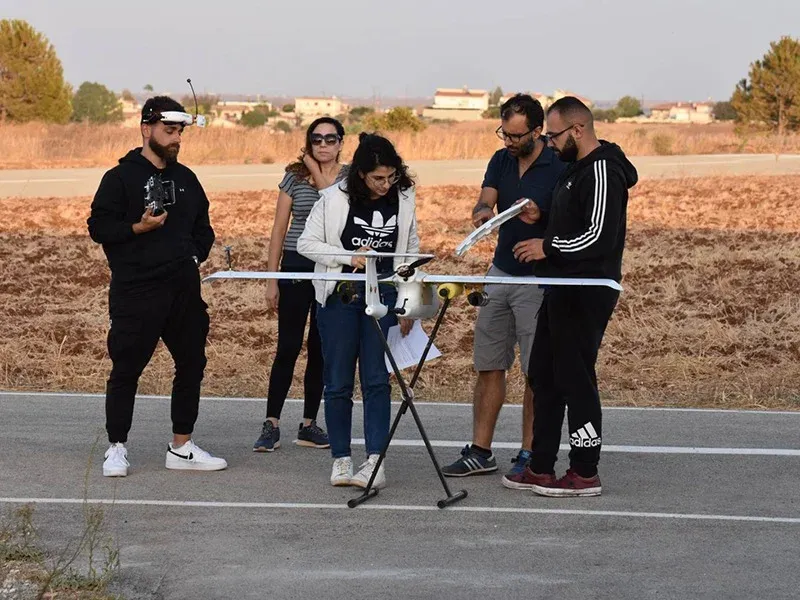When dust was in the air

During mid-October 2021, mineral dust was suspended in the atmosphere over Cyprus, causing local residents to notice the appearance of “sand” in exposed surfaces across the island.
Mineral dust is made out of many small particles suspended in the air, the size of which is about a hundred times smaller than the width of a sewing needle. It is lifted into the atmosphere by strong winds in desert regions such as the Sahara or the Arabian Peninsula, and then it is transported by the atmospheric circulation towards the Mediterranean (sometimes even reaching Northern Europe).
A team of experts of the Climate and Atmosphere Research Center (CARE-C), the Cyprus Institute, has been studying this dust event closely, using a number of model predictions, ground-based instruments, and drones.
The event started on the morning of 24 October, when the dust layer was found at an altitude of 5,000 meters, and it continued until 1 November in the evening, when a cleaner air mass reached the island. During this period, the team performed 17 scientific flights using specialised unmanned aerial systems (drones) which were able to measure the atmospheric conditions up in the higher layers, reaching in the best conditions up to 4,000 m above sea level. The dust properties were also monitored continuously on the ground with dedicated equipment at three stations (Nicosia, Agia Marina Xyliatou and Troodos). This includes remote sensing instruments able to sound the upper atmosphere remotely.
These observations were made possible through a combination of the expertise and research infrastructure of CARE-C; dedicated specialised observations from the Cyprus Atmospheric Observatory, the development of novel airborne technologies through the Unmanned Systems Research Laboratories, and the expertise of the Center’s research scientists. This intense research effort started in mid-October, when the researchers started closely monitoring the atmospheric conditions over Cyprus, and continuing for two more weeks, leading to additional observations in the case that another dust event reaches the island. The results of the experiments and the large amount of data collected will then be analysed to provide us with new knowledge, and allowing us to improve our understanding of the climate and meteorology of the Eastern Mediterranean.

